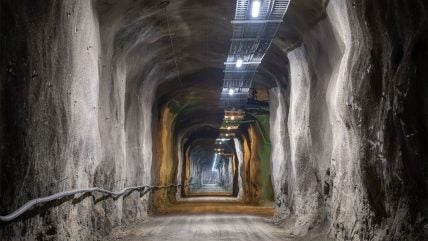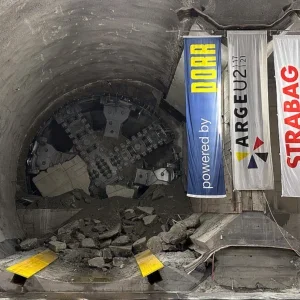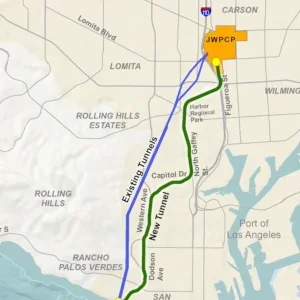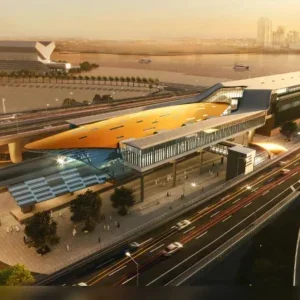
Metrostav Norge has broken through on the first level of a rock hall for a zinc production smelter’s underground waste storage system.
The company is excavating two mountain caves for the extension of a waste system for zinc and zinc alloy producer Boliden Odda.
Waste from the zinc smelter in western Norway is piped in water in a closed circuit.
The two halls are 250m long, 30m wide and up to 75m high. Each has a volume of 400,000m3. They are being excavated in five levels, the first three levels excavated by drill and blast and the last two levels by quarrying.
Metrostav Norge is also extending the network of access tunnels by 540m and excavating a new 120m-long mercury storage hall which has a volume of 22,700m3. The total excavation volume is 881,000m3.
The rock mass is transported through the tunnel system and dumped into the sea via barges. Metrostav says this process is carefully monitored and managed logistically, as there are strict regulations on where on the seabed the material can be spread.
Since tunnel excavation began on August 13, the project has faced several challenges. One of the most challenging aspects was the entrance to the first tunnel hall, where there are steep gradients of up to 21.5%.
Metrostav Norge has also had to negotiate the close proximity to Boliden’s existing facilities, which remain operational. The first blasting of one hall was only 3m from Boliden’s active installations. On October 31, work on the tunnel halls was halted for 17 hours when prolonged rainfall caused landslides and flooding on roads, blocking both access routes to the entrances.







